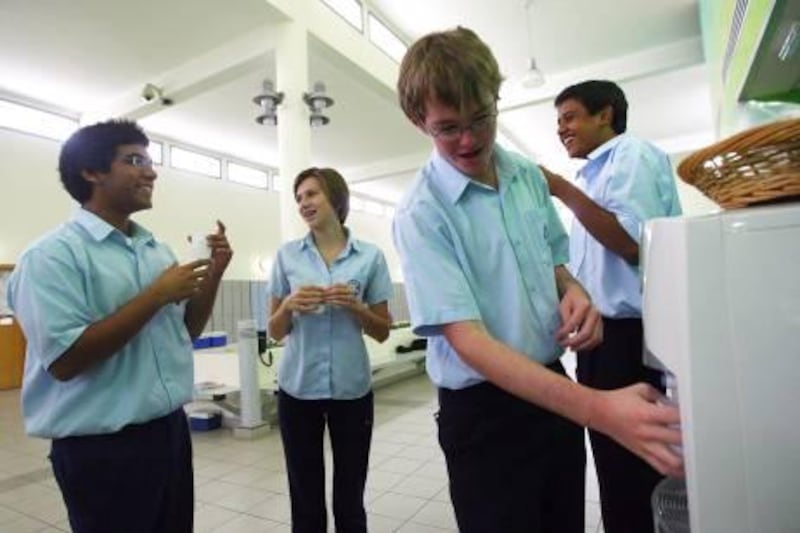SHARJAH // It felt strange at first, the pupils at Sharjah English School said, drinking water made from air.
Used to drinking the bottled variety, they have had about a month to adjust to the subtle difference in flavour.
"In the beginning it was a bit weird, as we did not know how it worked out," said Alistair Dymock, a 16-year-old Sharjah English School pupil from England.
"You have to get used to it," said his classmate, 16-year-old Lakwin Kannangara, from Sri Lanka.
Situated on Maliha Road, on the outskirts of Sharjah, the school has become the first in the country to produce enough water to feed the needs of its teaching staff and student body by capturing moisture in the air.
The system, installed on a 970-square-metre plot on the school grounds by the Dubai company Liquid of Life, produces 250 litres of drinking water every day - enough for 600 pupils and their teachers.
Several factors drove the project, which was launched last month. The water supplied via the municipal network was high in salinity and not suitable for drinking, meaning the school was going through 80 four-gallon containers of water every week, said David Barnes, the school's bursar.
With a recycling programme and other environmental initiatives in place, the school's administration wanted to reduce the amount of plastic waste it produced as well as cut down on the emissions produced by transporting the weekly supply.
"It was a natural progression of our efforts," said Mr Barnes. "It did not make sense not to have it."
The Dh51,000 cost of creating the new system was footed by the school itself. As a not-for-profit entity, it invests all proceeds from students' fees in infrastructure and other improvements.
However, besides its environmental merit, the scheme also makes financial sense. The school's water now costs just seven fils a litre to produce and the investment is projected to pay off within three years.
"The whole point of a sustainable system is that it is local," said Neil Hegarty, Liquid of Life's co-founder and partner. "This system generates water at the point of demand."
Doing so eliminates the need for producing and transporting plastic containers and the associated energy required and carbon dioxide released, he said.
The system uses the same process to produce water that works in nature to produce dew. When hot air touches a cold surface, provided the temperature difference between the two is around 12°C, the moisture dissolved in the air will turn into water.
The system relies on three 1.2 metre-tall devices. Each involves a network of small metal pipes that are chilled to a certain temperature, so that when warm air is pumped onto them, water is produced.
The system requires up to four kilowatts of electricity to produce the water, although the higher the humidity, the less is required, said Mr Hegarty.
"There is no fancy technology here," said Mr Hegarty, pointing to one of the generators.
After the water is produced it is collected and stored in tanks that can hold 10 days' supply. The water is passed through three different filters to remove impurities, including a final stage where it is pushed through a membrane capable of removing particles less than 0.001 microns in size, through which bacteria and viruses are unable to pass.
The water is then replenished with minerals and treated with ultraviolet light - another means of disinfection - before it reaches any of the 17 dispensers around the school. While at that storage point it is further treated with bubbles of ozone, applied in five-minute hourly bursts.






